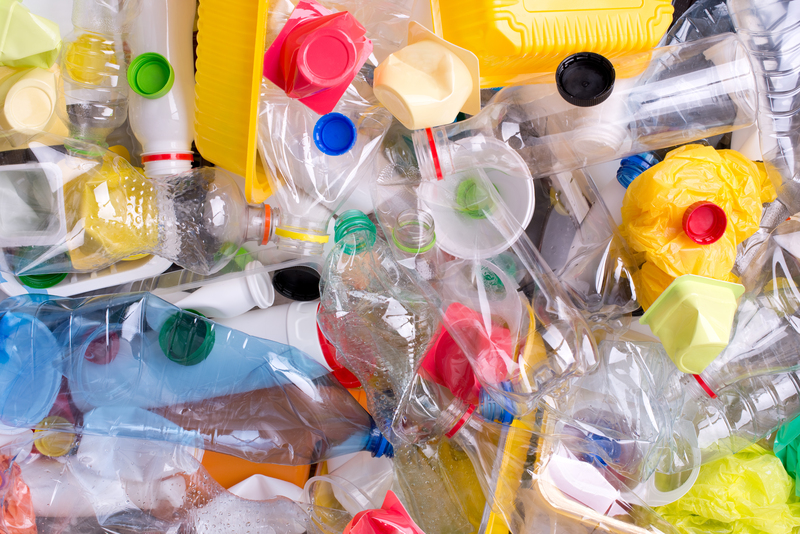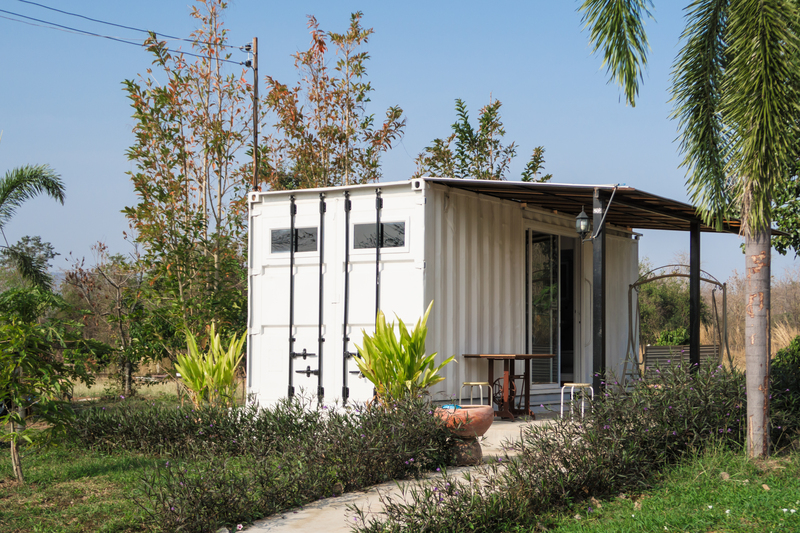Can New Strategies Eradicate Microplastic Pollution?
Microplastic pollution is increasingly recognized as one of the world's most pressing environmental crises, affecting our oceans, rivers, soil, air, and even our own bodies. As scientists and innovators race to develop groundbreaking solutions, one question stands out: Can new strategies eradicate microplastic pollution once and for all?

Understanding Microplastics: The Scope of a Global Problem
To comprehend the potential of eradicating microplastic pollution, it's essential to define what microplastics are and why they're so problematic.
What Are Microplastics?
- Primary microplastics: Manufactured intentionally at small sizes, such as microbeads in personal care products.
- Secondary microplastics: Result from the breakdown of larger plastics through weathering or abrasion.
Typically less than 5mm in size, microplastics are small enough to evade conventional filtration systems. They have been discovered in the deepest ocean trenches and atop remote mountain peaks, infiltrating even the most pristine corners of the planet.
Sources and Pathways
- Consumer products: Toothpaste, cosmetics, cleaning agents.
- Synthetic textiles: Release fibers during machine washing.
- Tire wear: Micro-rubber particles from roads.
- Large plastic debris: Breakdown under sunlight and friction.
The pervasiveness of microplastic pollution is a direct result of modern lifestyles and industrial processes that rely heavily on plastics. As a result, microplastics accumulate everywhere from marine food chains to human tissues.
Why Microplastic Pollution is so Dangerous
Microplastics are much more than just a litter problem:
- Health Risks: Studies indicate potential health risks for humans, animals, and plants exposed to microplastics, including hormonal disruption and cellular damage.
- Toxin Carriers: Microplastics act as sponges for hazardous chemicals such as pesticides, surfactants, and heavy metals, increasing the toxicity of their environments.
- Food Chain Impact: They are consumed by plankton and small fish, bioaccumulating up the food chain and entering human diets.
- Environmental Persistence: Being non-biodegradable, microplastics persist for decades, steadily accumulating.
The scale and complexity of the microplastic pollution crisis require new, innovative strategies for detection, removal, and prevention.
Emerging Strategies for Microplastic Pollution Eradication
Scientists and environmentalists have launched an array of new strategies targeting microplastics, ranging from technological breakthroughs to policy reforms. Let's explore the most promising solutions.
1. Advanced Filtration and Capture Technologies
- Nanotechnology Filters: Innovations in nanomaterials have enabled the development of ultra-fine filters capable of trapping micro- and even nano-plastics from municipal and industrial wastewater. These filters are now being integrated into water treatment plants worldwide.
- Ocean Cleanup Initiatives: Organizations like The Ocean Cleanup are deploying floating barriers and specialized vessels designed to capture plastic debris, including some forms of microplastics. While primarily focused on larger plastics, continual advancements are improving their capacity for microplastic removal.
- Magnetic Extraction: A novel technique involves binding microplastics with magnetic particles, allowing for easy separation from water using powerful magnets. Early laboratory results have shown promise in efficiently clearing microplastics from both freshwater and marine environments.
2. Biodegradable Plastics and Alternative Materials
- Bioplastics and Compostables: Replacing traditional plastics with materials that degrade naturally reduces the generation of microplastics. Research into algae-based plastics, starch composites, and other biodegradable alternatives is progressing rapidly.
- Eco-Friendly Textiles: New synthetic fibers are being engineered to shed fewer microfibers during laundering, or to biodegrade safely in the environment.
3. Biological Solutions: Harnessing Nature's Decomposers
- Plastic-Eating Enzymes: Scientists have genetically modified bacteria and engineered enzymes (such as PETases) that can break down certain types of plastics into safe, natural substances. Pilot projects are exploring their deployment in waste management and environmental remediation.
- Microbial Consortia: Natural microbial communities capable of degrading plastics are being cultivated and optimized for deployment in contaminated soils and water bodies.
4. Policy and Global Governance Strategies
- Microbead Bans: Legislation in multiple countries now prohibits the production and sale of microbead-containing products, directly reducing a primary source of microplastic contamination.
- Plastic Reduction Policies: Bans on single-use plastics, incentives for recycling, and extended producer responsibility (EPR) schemes push manufacturers to design products with end-of-life recyclability in mind.
- International Agreements: Efforts are underway to negotiate global treaties and coordinate responses to plastic and microplastic pollution, recognizing their transboundary nature.
5. Improved Detection and Monitoring
- Advanced Sensing Technologies: Innovative spectroscopy and microscopy techniques are actively being developed to detect microplastics in water, food, air, and soil at ever lower concentrations.
- Citizen Science Initiatives: Empowering communities and organizations to monitor local waters using easily accessible test kits and smartphone connectivity ensures rapid, widespread data collection.
The Role of Circular Economy in Tackling Microplastic Pollution
At the heart of many eradication strategies is the concept of a circular economy -- designing products and systems to eliminate waste, keep materials in use for as long as possible, and regenerate natural systems. Implementing circular economy principles can drastically reduce not only plastic production, but also the unintentional creation of microplastics.
- Product Redesign: Encouraging manufacturers to minimize plastic use, incorporate recycled content, and prioritize materials that do not degrade into harmful microplastics.
- Reuse and Refill Models: Retailers shifting to reusable packaging and products can prevent plastics from entering the waste stream at all.
- Recycling Innovations: Chemical recycling, depolymerization, and upcycling techniques convert waste plastics back into raw materials, reducing the need for virgin plastic and associated microplastic pollution.
Challenges and Limitations of Microplastic Eradication Strategies
While new strategies to eradicate microplastics are promising, many face notable hurdles:
- Scalability: Deploying advanced filtration or biological solutions at a global scale remains a costly and logistical challenge.
- Diversity of Sources: Microplastics originate from thousands of products and processes, making comprehensive prevention difficult.
- Environmental Trade-Offs: Some biodegradable alternatives require significant land, water, or energy inputs, potentially shifting the environmental burden.
- Unknown Long-Term Impacts: The ultimate fate and effects of microplastics -- as well as new break-down products from biodegradables or enzymatic treatments -- require more research.
- Policy Gaps: Regulatory mismatches between countries and weak enforcement hinder uniform progress in reducing microplastic pollution.
Can We Truly Eradicate Microplastic Pollution?
Eradication, in the strictest sense, would require not just removing all existing microplastics from the environment, but also eliminating their further production and release. While current efforts and innovations show that we can significantly reduce ongoing microplastic pollution, *complete eradication* faces immense technological, social, and economic barriers.
The Path Forward: Synergy of Technology, Policy, and Behavior
New strategies to eradicate microplastic pollution offer hope, but their effectiveness ultimately depends on integration across multiple sectors:
- Government and Regulation: Stronger international cooperation, ambitious policy reform, and investment in research and infrastructure are essential.
- Industry Transformation: Companies adopting sustainable materials, cleaner production methods, and designing out plastic waste can dramatically curb microplastic sources.
- Individual Action: Choices made by consumers -- from reducing single-use plastics to choosing sustainable clothing -- collectively add up to significant impact.
- Science and Innovation: Continued research, coupled with public and private sector investment, will deliver new breakthroughs essential to microplastic pollution eradication.
Conclusion: A Collective Commitment to a Plastic-Free Future
The eradication of microplastic pollution is an achievable -- if ambitious -- goal that necessitates the combined force of scientific innovation, effective policymaking, and shifts in public behavior.
By embracing new strategies for microplastic removal and prevention, supporting a robust circular economy, and demanding accountability at all levels of society, we can envision a future where microplastics no longer threaten the health of our environments, wildlife, and ourselves.
Together, our actions today will determine whether microplastic pollution becomes a relic of the past, or continues to define our future. The time for innovative, collective action is now.

Frequently Asked Questions: Microplastic Eradication
How do microplastics affect human health?
Microplastics have been found in drinking water, seafood, table salt, and even bottled beverages. Studies show they can cause inflammation, disrupt hormones, and potentially facilitate the entry of toxic chemicals into the bloodstream. Long-term health outcomes are still being researched.
What can individuals do to help?
- Reduce consumption of single-use plastics
- Choose clothes and textiles made of natural fibers
- Support companies and products that use sustainable packaging
- Participate in community clean-up events
- Advocate for stronger plastic policies and regulations
Are biodegradable plastics the solution?
Biodegradable plastics offer promise, but their real-world performance often depends on specific environmental conditions not always present in oceans or landfills. Research and responsible design remain critical to ensuring they do not become new pollution problems.
Will technology alone solve the microplastic problem?
While technology is a crucial tool for detecting, capturing, and breaking down microplastics, lasting change will also rely on global shifts in how we produce, consume, and manage plastic materials.
Further Reading and Resources
Let us all be part of the solution in eradicating microplastic pollution -- for ourselves, future generations, and the planet we call home.